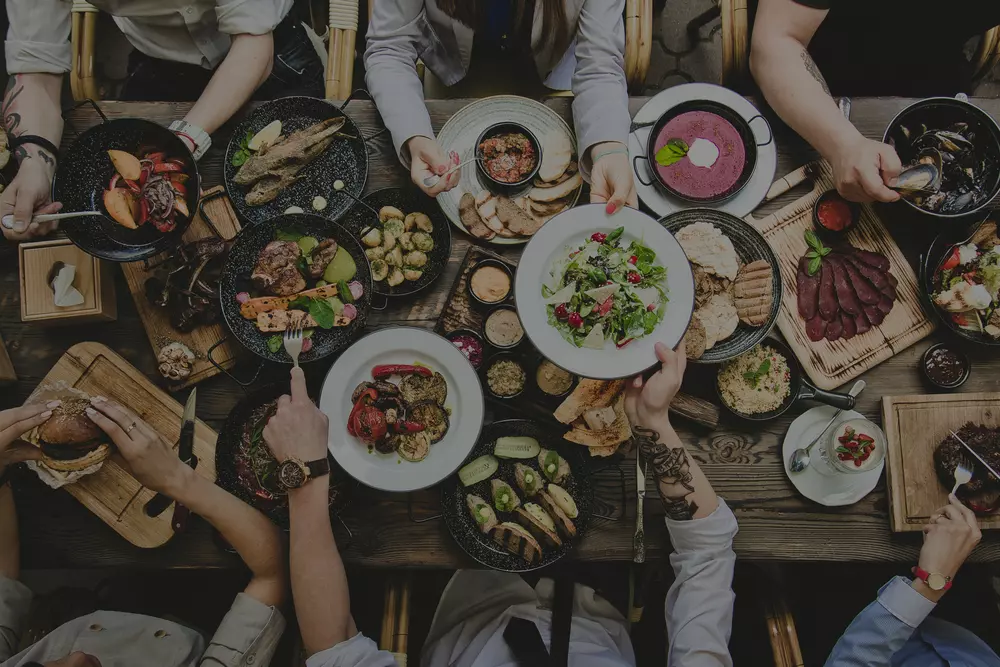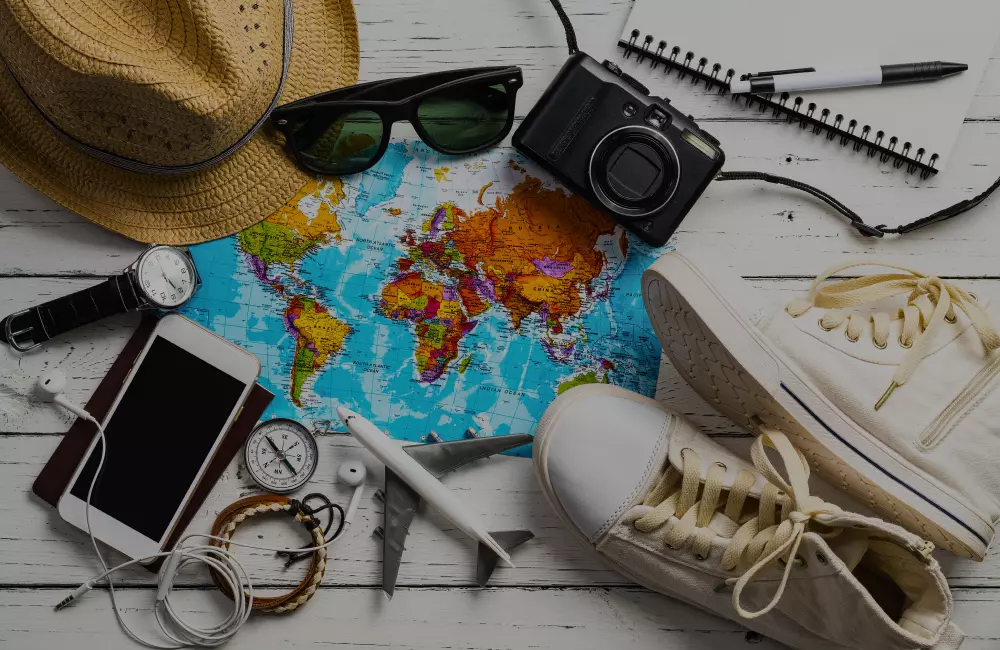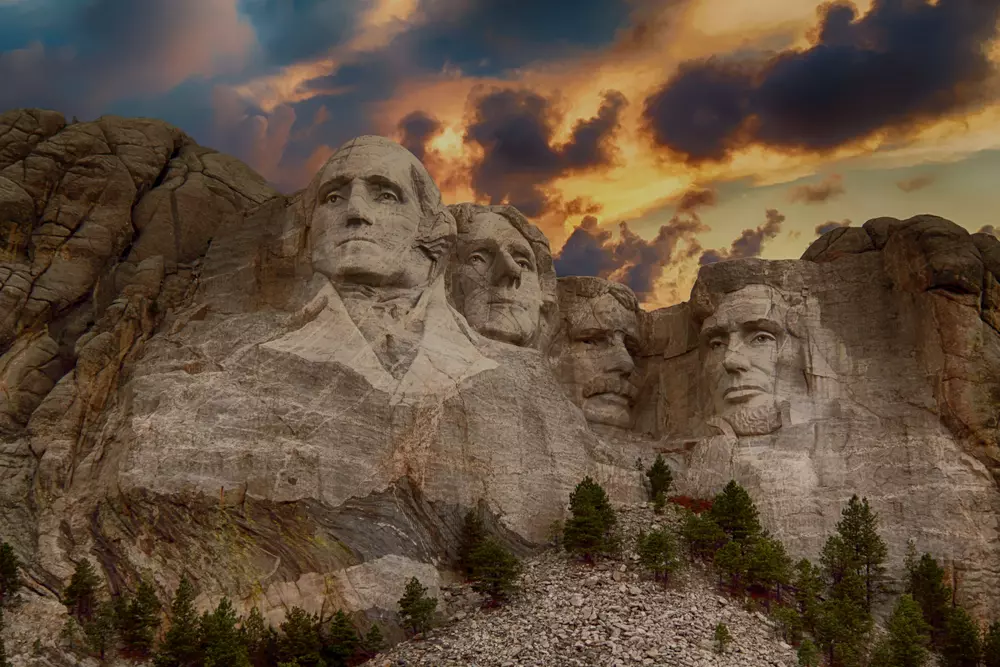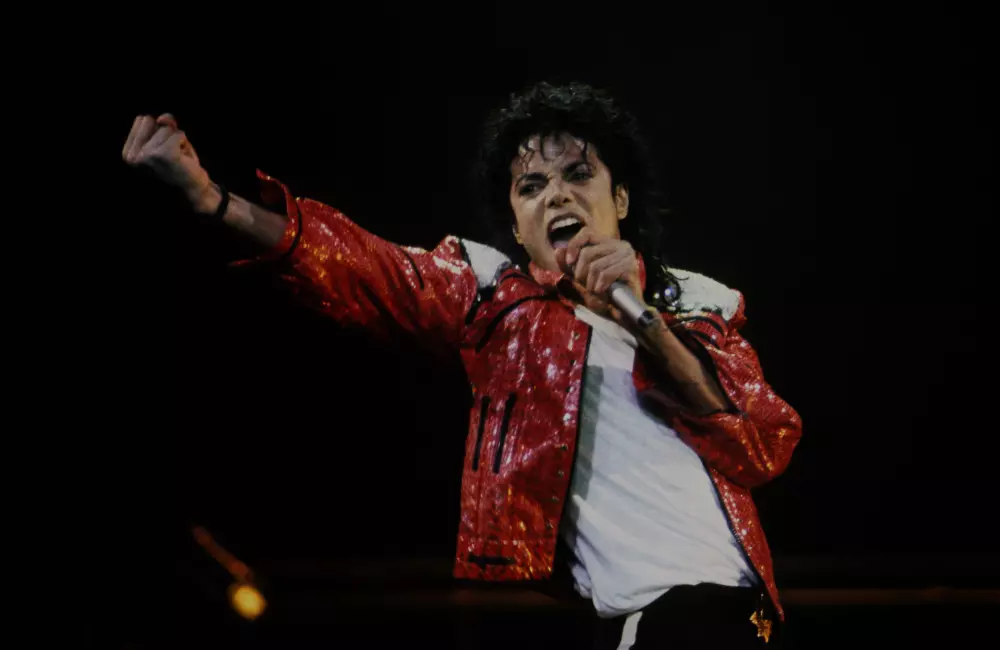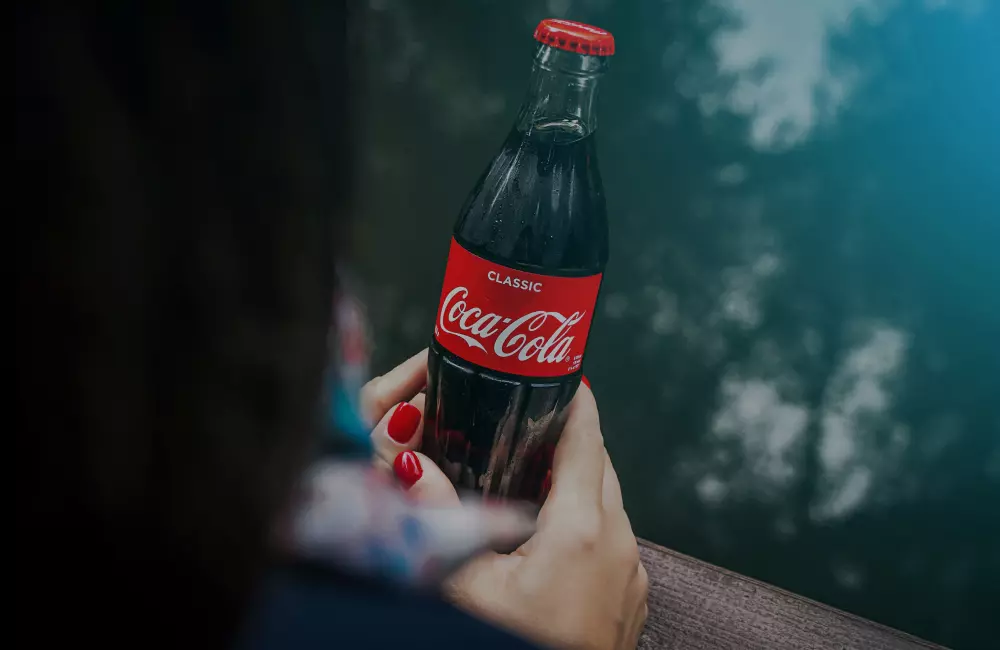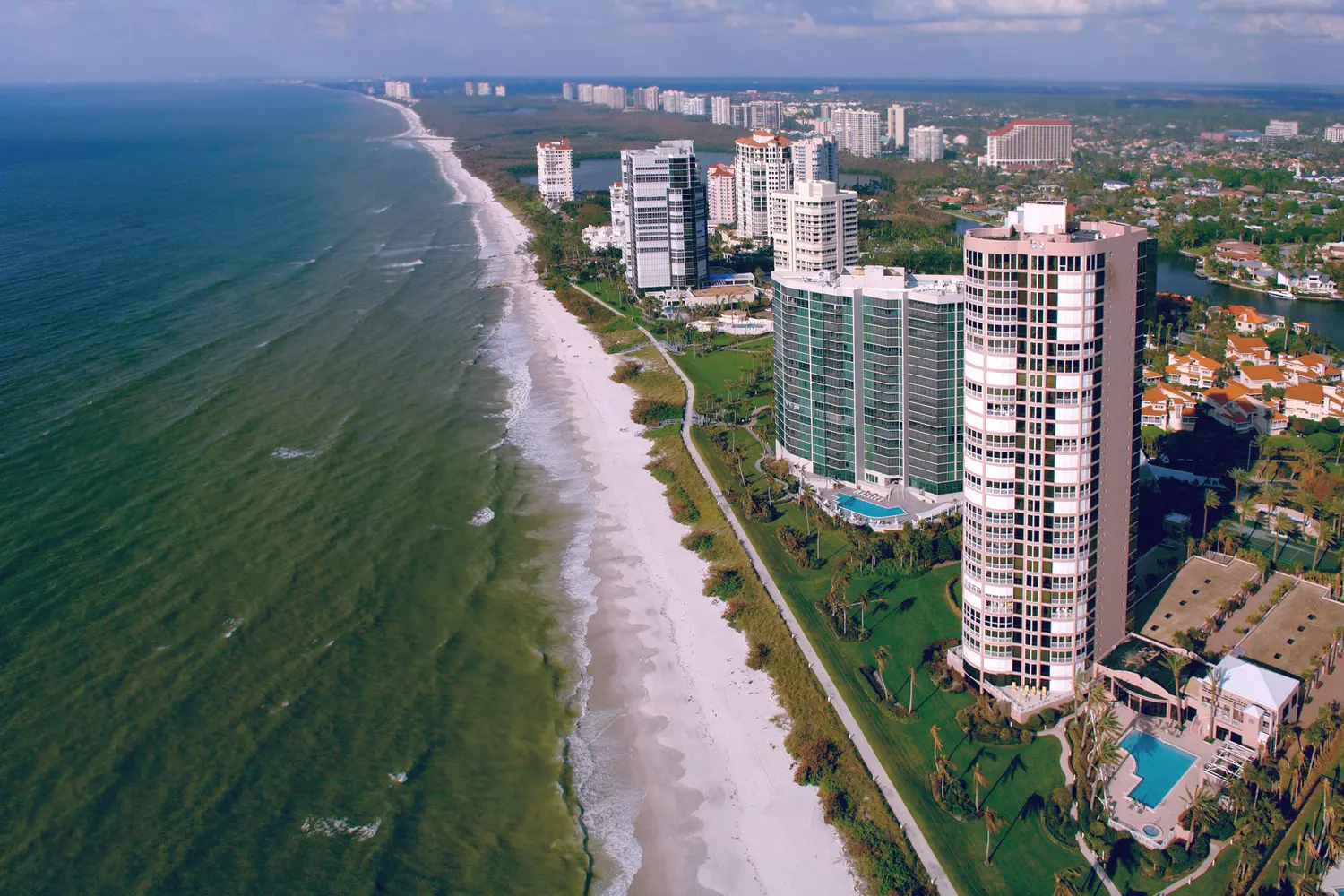Every October, it’s as if America goes a little mad. From mid-month on, a whimsical fever takes over — streets are draped in cobwebs, inflatable skeletons and coffins pop up everywhere, store windows glow with eerie jack-o’-lanterns, and the air fills with the sweet scent of caramel, gingerbread, and costumed chaos. This isn’t just a holiday. This is Halloween — one of the most beloved and spectacular days on the American calendar.
Adults temporarily forget about bills and office work, transforming into vampires, fairies, superheroes, and even slices of pizza. Children — the true stars of this theater — dress as monsters and princesses, going door to door with bags in hand, shouting in unison: “Trick or treat!”. And the whole town, big or small, becomes a set straight out of a Tim Burton movie.
Halloween in the U.S. is more than a tradition or entertainment — it’s a cultural phenomenon, a reflection of the American spirit. It’s got it all: a love for grand gestures, a passion for costumes, generosity, and even fear as a form of therapy. People look forward to it, plan for it, and talk about it like it’s a movie premiere or major sports showdown.
But to truly feel this holiday — Netflix just won’t cut it. You have to be here. To see with your own eyes the suburban streets transformed into avenues of fright and wonder, to watch adults compete for the most creative house decorations, to witness cities turning into carnival dreams. You have to hear children’s laughter and the creak of old doors when the evening candy hunt begins. You have to taste pumpkin donuts, hot cider, and the season’s signature treat — spiced latte.

In the U.S., Halloween is the second biggest candy-selling holiday after Christmas. Each year, more than $3 billion is spent on sweets.
The Origins of Halloween: A Brief History
Few people stop to think that behind the playful costumes and bags of candy lies a history that spans thousands of years — ancient, mystical, and at times, quite dark. The roots of Halloween trace back to pre-Christian times — to the Celts who lived in what is now Ireland, the United Kingdom, and northern France.
- 01. Samhain: Welcoming Winter and Spirits
For the Celts, the most important time of year was the festival of Samhain, celebrated on the night of October 31 to November 1. The word Samhain, pronounced "sow-in", literally means “end of summer.” It marked a transition — between summer and winter, light and darkness. It was believed that on this night, the boundary between our world and the spirit world became thin. The souls of the dead could return to visit loved ones — or cause harm.
To protect themselves, people lit large bonfires meant to cleanse and shield. They wore animal skins and frightening masks to scare away evil spirits. Food was left at doorsteps to appease supernatural visitors. These weren’t just folkloric rituals — they were deeply embedded in the way of life and worldview of the time. - 02. Christianization and the Holiday’s Rebranding
With the spread of Christianity, the Church sought to adapt and reinterpret pagan rituals rather than eliminate them entirely. Thus, Samhain evolved into All Hallows’ Eve — the night before All Saints’ Day, celebrated on November 1. Eventually, this name was shortened to the familiar Halloween.
Even with its new religious meaning, the holiday retained its magical overtones. Folk traditions preserved the costumes, lanterns, and the concept of encountering spirits. Only now, the bonfires were joined by candlelit lanterns, and the masks by games and treats. - 03. Immigrants and the American Imagination
In the 19th century, millions of Irish fled famine and poverty for the New World — the United States. They brought their traditions with them. Halloween began to take root in this new land, gradually taking on an increasingly “American” character with each decade.
America — a country that knows how to turn even ancient rituals into a show — gave the holiday new dimensions: the tradition of “trick-or-treat” (children asking for treats under threat of mischief), parades, carnivals, costume contests, and yard decorating competitions. Masks grew brighter, candy more varied, and fear — more fun.
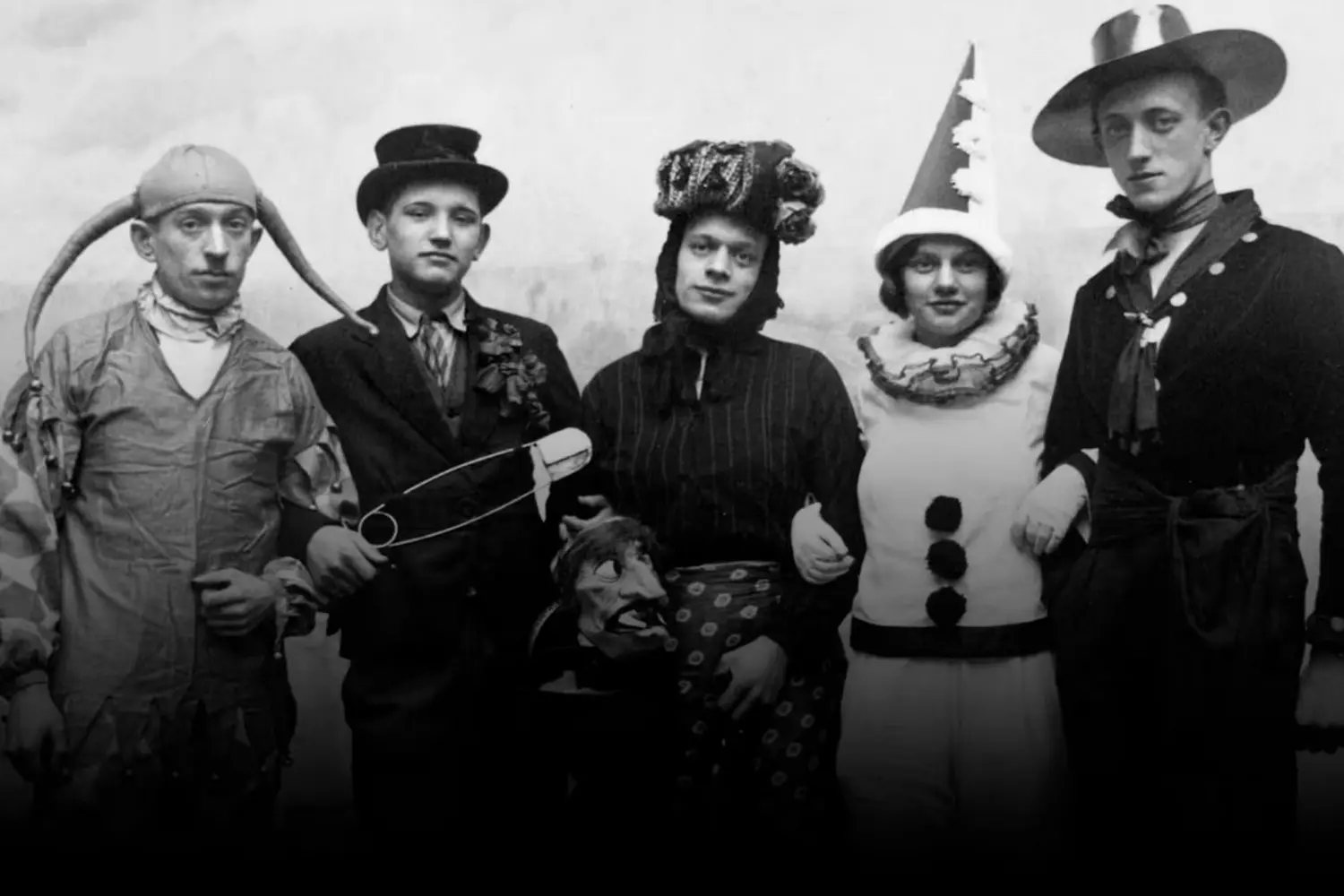
Masquerade, a Million Candies, and a Touch of Magic: Why America Loves Halloween
Today, Halloween in the USA is more than just a date on the calendar. It is a true cultural ritual, prepared for from late September as if for a grand show. Schoolchildren discuss who will be the scariest this year, teenagers get their costumes ready for parties, adults transform their homes into scenes straight out of horror movies, and supermarkets compete in creativity with Halloween products — from marshmallows shaped like eyeballs to glowing costumes for dogs.
Americans love Halloween for everything at once: the chance to become someone else for a while, the atmosphere of mystery and carefree fun, and the communal celebration where age doesn’t matter. It’s a holiday that combines childhood dreams, cinematic aesthetics, and good-natured madness. It unites neighbors, blurs age boundaries, and makes October one of the most eagerly awaited months of the year.
Why has Halloween become so beloved in America? How did it evolve from a folkloric custom into a celebration on the scale of the Super Bowl? And what do millions of Americans do on this day — in cities, suburbs, and even on farms? All this and more — ahead.
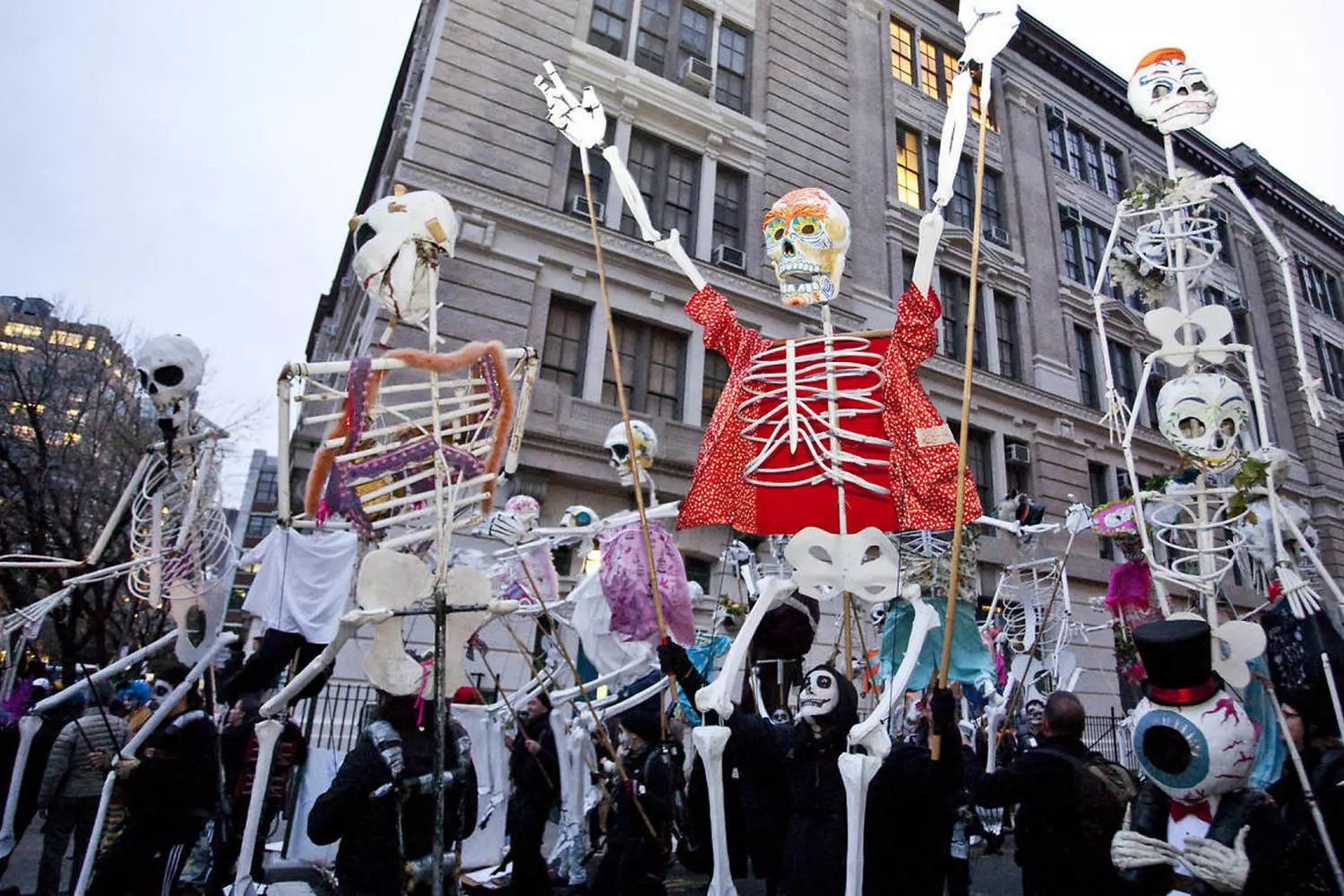
Welcome to the Haunted House: How Homes Are Decorated for Halloween in the USA
If you find yourself in America in October, get ready: ordinary streets suddenly transform into movie sets filled with ghosts, zombies, and skeletons. Halloween is not just an excuse to dress up, but a real competition among neighbors for the title of the scariest, most creative, or funniest yard. Decorating the house is one of the main rituals of the holiday, and it is taken very seriously here.
- 01. Home horror decor: from cute to terrifying
Each homeowner decides for themselves how their Halloween decorations will look. Some choose friendly images — smiling pumpkins, fabric ghosts, glowing garlands. Others turn their property into a full-fledged "haunted house" — with bloody stains, killer mannequins, and scary music coming from the porch speakers. Especially popular are:
- Thousands of pumpkin lanterns (Jack-o'-lanterns) — carvings range from cute faces to true art installations.
- Artificial cobwebs with giant spiders — stretched over bushes, windows, and even roofs.
- Tombstones with funny inscriptions — entire cemeteries “grow” in front of houses.
- Animatronics and smoke machines — to create an atmosphere of real horror.
- Horror movie themes — Chucky, Freddy Krueger, Pennywise and other familiar faces “sit” in rocking chairs or peek out from windows.
There is a whole industry of professional Halloween decorators in the US who can transform your home into a cinematic horror show for several thousand dollars. The queue for them starts forming in spring!
- 02. Decorations aren’t just for kids
Although the holiday is mostly associated with children’s candy and costumes, decorating homes is primarily an adult pastime. It’s an opportunity to express oneself, play director, unite with neighbors, and put on a small show on one’s street. In some neighborhoods, annual contests are held — the winner receives a prize and sometimes the respect of the entire community. - 03. Halloween as a reason to socialize
Decorated houses are not just “decor.” They are a sign: children are welcome here, it will be fun, and good candy is given out. This creates a Halloween map of the neighborhood — children with parents plan their routes in advance to visit the most interesting locations. Meanwhile, adults exchange recipes for “witch’s punch” and decorating tips.
How much does it cost to scare your neighbor: Halloween decoration expenses
Halloween is not only a fun holiday but also an expensive one. According to the National Retail Federation (NRF), Americans spend over $10 billion annually preparing for it, and a substantial portion of this money goes to home decorations. Just think about it:
- On average, an American family spends $30–100 just on decor.
- People competing in neighborhood contests can spend from $500 to $3000 creating a full-scale “scary scene” in their yard.
- In major stores — from Target to Home Depot — Halloween decor flies off shelves starting early October. Especially popular are animatronic figures, moving skeletons, glowing tombstones, and smoke machines.
- Some rent decorations — it’s cheaper to create an impressive show for one night that way.
- In recent years, there’s been a rise in demand for solar-powered garlands, energy-efficient lights, and recyclable materials, showing that even Halloween strives to be more eco-friendly.
- There is even a market for used Halloween decorations in the US. On eBay, Craigslist, and Facebook Marketplace, thousands of listings offer second-hand “zombies,” “witches,” and fake blood for sale.
The craziest Halloween installations: from Vegas to Texas
Americans are known for their imagination and love of “over the top,” especially on Halloween. Some yards become so epic that they are featured on TV and in the news. Here are just a few vivid examples:
- 01. Las Vegas: "Elvis’s Ghost Wedding"
At a private home, a family staged a full theatrical performance: mannequins dressed as zombie Elvis and a bride, a mini-wedding ceremony, with the slowed and distorted version of “Can’t Help Falling in Love” playing in the background. At night, it’s truly scary there. - 02. Austin, Texas: "Apocalypse 2020"
After the pandemic year, a local resident turned their yard into a survival scene: zombies wearing masks, toilet paper in bloody packages, skeletons at laptop screens. Ironic, dark — and incredibly popular on Instagram. - 03. New Jersey: "The Moving Haunted House"
A local engineer built a fully automated “scare zone” — skeletons powered by motors, motion-activated lights, and even QR codes with an interactive smartphone game. Everything is synchronized with music. - 04. California: "The Bloody Musical"
A family from Los Angeles put on a full show right on their lawn. Stage, spotlights, costumes, microphones, and skeletons dancing to “Thriller” by Michael Jackson. Yes, there were rehearsals. Yes, it was a hit.
One of the most viral Halloweens happened in Utah, where a family installed a giant 6-meter skeleton (sold at Home Depot) and dressed it differently every day — from a mermaid to a businessman. The video gathered millions of views on TikTok.
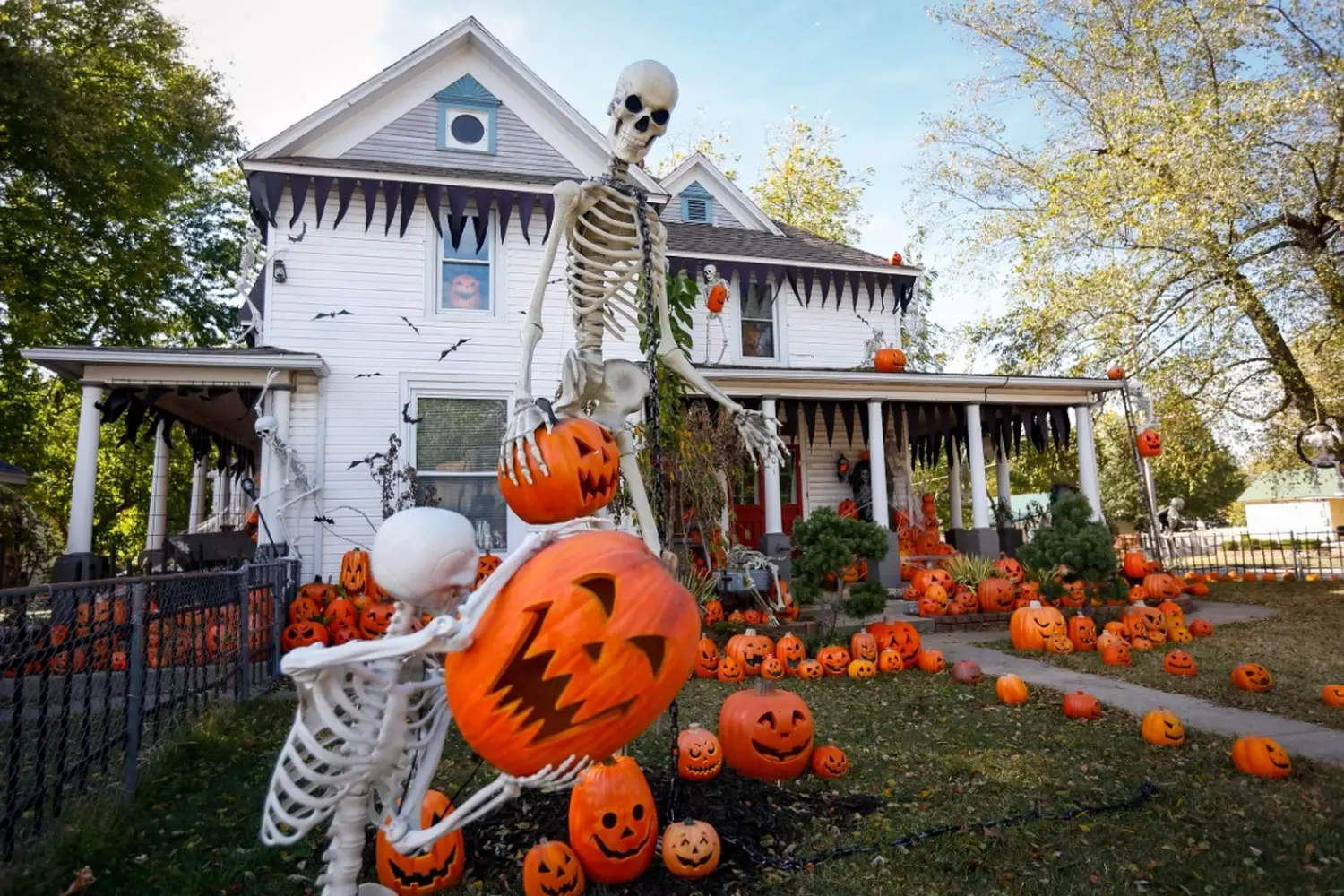
Pumpkins, Witches, and Black Cats: What Do Halloween Symbols Really Mean?
Halloween is impossible to imagine without its iconic symbols. Each of them is not just a decoration, but a symbol with deep historical and cultural roots. Let’s explore where they came from and what they mean.
- 01. Jack-o’-lantern: the mystical story behind the glowing pumpkin
The pumpkin carved with a scary face and a candle inside is Halloween’s main symbol. But originally, it wasn’t a pumpkin at all. The story goes back to an Irish legend about a clever drunkard named Jack, who tricked the devil twice. After his death, he was refused entry to both heaven and hell — condemned to wander the earth forever with a coal inside a hollowed-out turnip. When the tradition came to America, the turnip was replaced by the pumpkin — brighter and easier to carve. - 02. Witches: from fear to folklore
The image of the witch is not just an old woman in a black hat. It echoes medieval fears and the witch hunts. Today, the witch is not necessarily evil. She has become a pop culture icon: independent, magical, with a touch of dark charm. Witch costumes are especially popular among women and girls at Halloween. - 03. Black cat: bad luck or magical ally?
The black cat is another indispensable Halloween character. In the Middle Ages, they were considered companions of witches and even werewolves. In the US, there’s still a belief that a black cat crossing your path brings bad luck. But in Europe, it’s the opposite — it’s good luck.
During Halloween, cats are used in decor as symbols of mystery, night, and hidden magic. Some cities even hold charity events to find homes for black cats during this period. - 04. Ghosts: spirits being called
White ghost silhouettes are a classic. They refer to the essence of Samhain, when it was believed the dead returned to earth. The images of spirits represent both fear and respect for the afterlife. In American culture, ghosts are often portrayed as cute rather than scary — think of Casper. - 05. Bats: night creatures of darkness
Bats entered Halloween folklore because of their nocturnal activity and association with vampire legends. They evoke both fascination and unease, especially in dim light. That’s why their silhouettes decorate windows, garlands, and even cupcakes in October. - 06. Cobwebs and spiders: the atmosphere of decay
Cobwebs symbolize time, oblivion, age, and traps. On Halloween, they’re used to create the feeling of an ancient house where “something lives.” Plastic spiders and cotton “webs” are a must-have in every Halloween decoration.
The symbolism of Halloween is not just a set of spooky things. It reflects human fears, beliefs, and the desire to befriend the unknown. And it’s also a way to make the holiday bright, memorable, and truly magical.
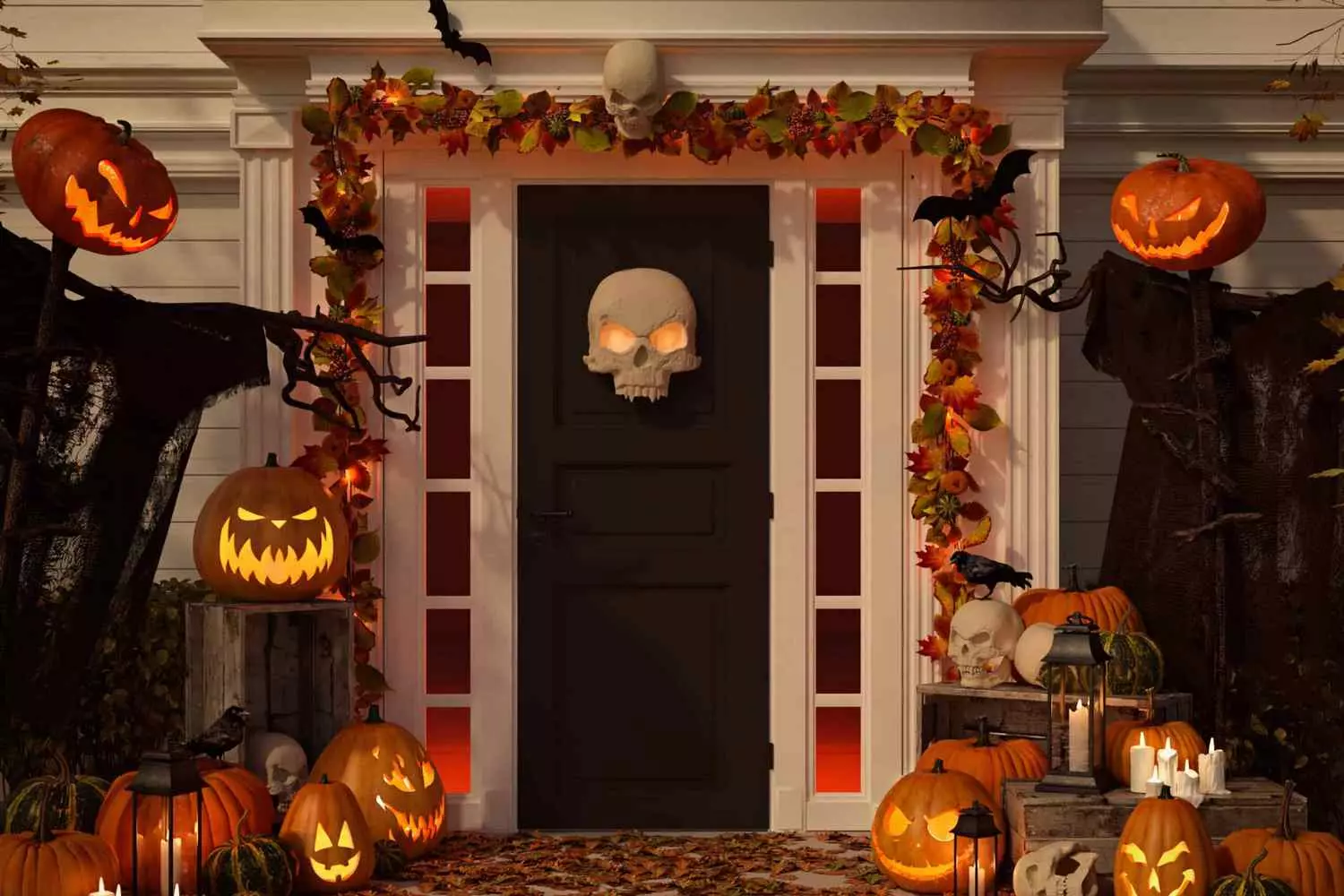
"Trick or Treat!" — the kids’ quest that conquered America
Once a year, across the streets of America, a chorus of voices chants a spell that melts even the toughest hearts: Trick or treat!
Literally translated, it means "Your wallet or your life!" Or, in a gentler version — "Treat me or else."
But this is not just a game. It’s a ritual, a celebration of childhood, a theatrical candy quest that has become an inseparable part of Halloween in the US. And it has its own history, traditions, and even etiquette.
- 01. From rituals to candy: a brief history of the tradition
The tradition of asking for treats on the eve of November 1st traces back to Europe. In Britain and Ireland during the Middle Ages, children and the poor would go door to door asking for soul cakes — special pastries given in exchange for prayers for the dead. This custom was called souling. People believed these offerings helped souls find peace.
When Irish immigrants arrived in the US, they brought Samhain and souling traditions with them. By the early 20th century, American children were already actively going door to door in costumes, asking for sweets. By the 1930s and 40s, the phrase "Trick or treat" became the holiday’s standard call. - 02. What “Trick or treat” looks like today
Picture this: evening, October 31st. Twilight. Witches, superheroes, zombies, mermaids, dinosaurs, and little Harry Potters roam the streets. Kids — from toddlers to teens — carry special baskets, buckets, or even pillowcases, knock on doors, and cheerfully shout in unison: Trick or treat!
If the homeowner is friendly and prepared, they hand out candies, cookies, caramels, mini chocolates, or packs of Skittles. If not — well, theoretically they might get “tricked.” In the past, this meant harmless pranks like toilet paper on trees or soap on windows. Nowadays, it usually just means disappointment and moving on to the next house. - 03. How Americans prepare for “Trick or treat”
To join the tradition, residents decorate their homes: placing jack-o’-lanterns, hanging garlands and cobwebs, and making themed installations. The most important sign is a porch light left on. It means: "We’re participating — come knock!" Many also leave treats in a bowl by the door with a note: “Take one, please!” This is handy if the homeowners are away or don’t want to open the door repeatedly. - 04. Children’s joy and parental control
For kids, it’s a magical adventure. For parents, sometimes a bit stressful. That’s why in the US, strict time frames are observed: trick-or-treating usually happens between 5 PM and 8 PM. Parents accompany the little ones, pick safe neighborhoods, and check candy wrappers for safety.
Some cities even hold alternative “trunk or treat” events — cars line up with decorated trunks, and kids collect sweets from each. It’s safe and fun, especially for the youngest.
The candy magic: what’s given and what’s expected
Halloween in America is primarily a holiday for sweet lovers. In one evening, a child can gather a whole bag full of treats. And it’s no random assortment. The most beloved Halloween candies are:
- Reese’s Peanut Butter Cups — chocolate with peanut butter. The absolute sales and popularity leader.
- M&M’s — especially in Halloween-themed packaging.
- Snickers, Kit Kat, Milky Way — classic candy bars.
- Skittles and Starburst — for fans of fruity flavors.
- Tootsie Rolls, Twizzlers, and Candy Corn — old-school favorites still going strong. Candy Corn, in particular, is either loved or hated by Americans. These small, three-colored “kernels” taste like vanilla and honey and are traditionally associated with Halloween despite debates about their flavor.
Many houses hand out mini versions, but some generous neighbors give full-size bars — these homes kids remember and return to year after year.
Halloween “trick-or-treat” etiquette
A few unwritten rules all Americans know:
- Don’t knock on houses with the lights off or without decorations.
- Don’t be pushy — if no one answers, move on.
- Don’t take more than one treat if the note says “Take one.”
- Always say thank you after receiving candy.
Trick or treat is a holiday within the holiday. Childhood freedom, street adventure, candy magic, and a bit of family nostalgia. Arguably, no other day inspires Americans with such fondness and warmth as the evening of October 31st.
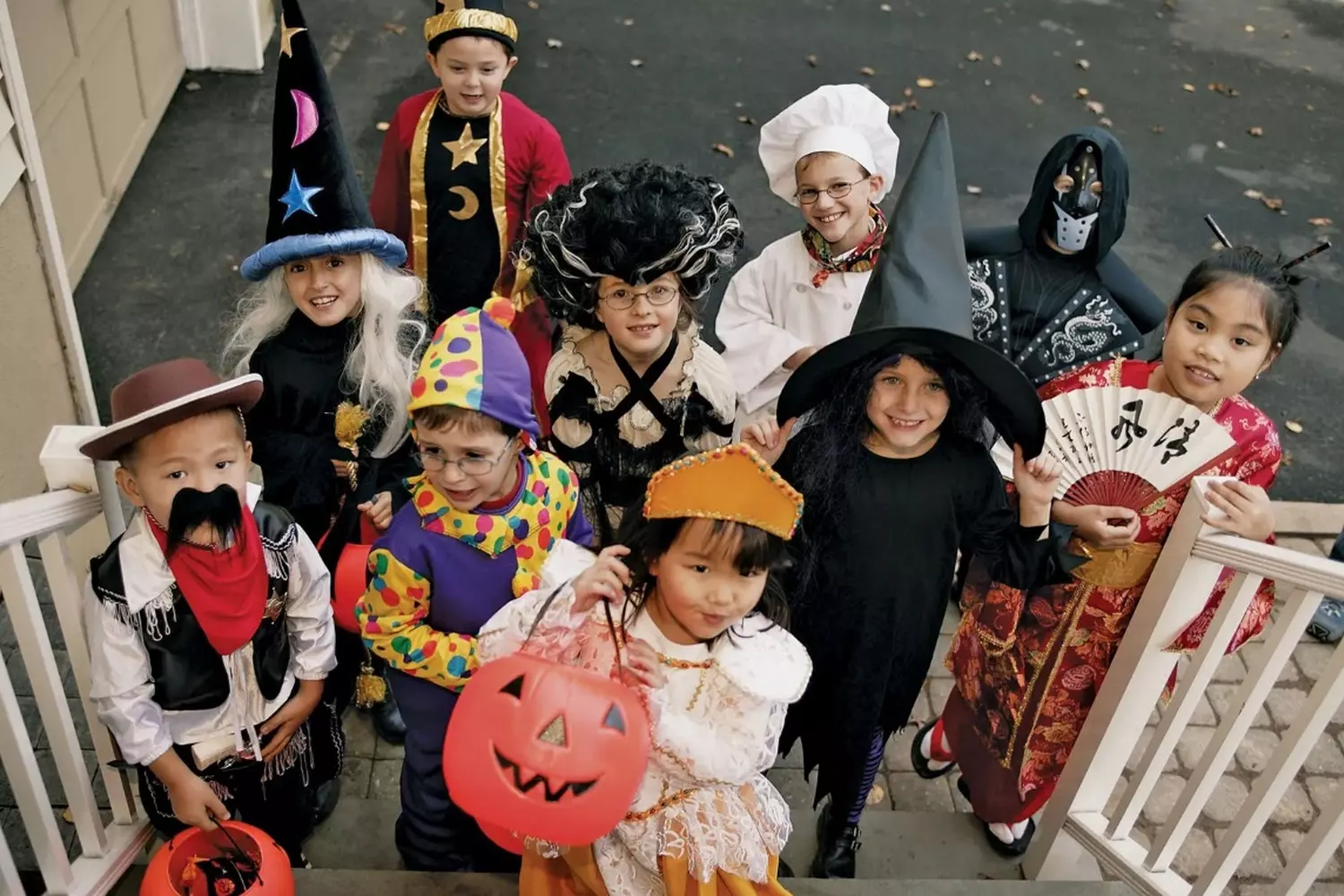
Beyond “Trick or Treat”: the rich Halloween traditions in America
Halloween is not just about children visiting with bags of candy and pumpkin lanterns. It’s a true festival of imagination and creativity that sweeps across the entire country, turning October into a kaleidoscope of vibrant events and customs. From lively parties and parades to mysterious pumpkin mazes and exquisite treats on the festive table — Halloween in the USA offers countless unforgettable experiences every year. Let’s dive into this amazing world of traditions!
- 01. Parties and parades: the main Halloween drive
Halloween parties are a celebration for adults and teenagers who want to try on not just children’s costumes but more impressive outfits without fear of judgment. Costume balls, nightclubs, themed gatherings in bars and restaurants — all of these become the epicenter of Halloween fun. - 02. Pumpkin farms and corn mazes: autumn adventures
October is the time for outdoor excursions, and Americans love to do this as a family, combining active recreation with Halloween themes. One of the brightest entertainments is visiting pumpkin farms.
- There, you can pick your very own pumpkin right from the patch, turning it into a real adventure.
- Often, farms offer corn mazes — huge, intricate, and sometimes a bit spooky, attracting both children and adults.
- Some places stage theatrical horror shows where actors in scary costumes frighten visitors along the maze.
Farms also hold pumpkin carving workshops, where the craft is passed down from generation to generation.
- 03. What’s on the festive table?
Halloween is not only street fun but also family dinners filled with themed dishes that emphasize the holiday’s atmosphere. Typical Halloween treats include:
- Pumpkin pie — the king of desserts, sweet and aromatic with hints of cinnamon and nutmeg.
- Caramel apples — apples coated in caramel, sometimes decorated with nuts or chocolate, reminiscent of the golden autumn.
- Cookies and cupcakes shaped like spiders, mummies, ghosts, and bats — kids and adults love not only eating but also decorating such sweets.
- “Bloody” punch and cocktails — drinks with red syrup or juice, decorated with spooky elements like “eyes” made of ice.
The festive table may also feature savory snacks, such as mini meatball “eyeballs” or skull-shaped sandwiches. Everything is served with creativity and humor!
Halloween in America is a celebration that combines childhood joy, creative flair, and a general atmosphere of mystery. From pumpkin farms to loud parades, from sweet treats to scary costumes — it’s a time when everyone can feel part of a magical autumn tale.

Top 7 Best Places for an Unforgettable Halloween in the USA
If you think Halloween is just a holiday with pumpkins and candy, try to dive into its true essence by visiting some of the most famous places in the USA where this holiday is celebrated on a grand scale. From mystical towns to megacities with epic parades — here’s where you can feel the spirit of Halloween 100%!
- 01. Salem, Massachusetts — the city of witches and mysticism
Salem is an iconic place for lovers of mysticism and witch stories. It was here in 1692 that the infamous “witch trials” took place. In October, the city turns into a true theater of horror and folklore: tours, exhibitions, costume processions, and even theatrical performances take place.
Why go: an incredible atmosphere, historical context, and a wealth of themed events. - 02. New York City — the loudest Halloween parade
Every October, thousands of costumed participants gather in Manhattan to take part in the grand Village Halloween Parade — one of the largest Halloween parades in the world. Giant puppets, fantastic costumes, musical groups, and live performances make this parade a true street carnival.
Why go: the energy of the metropolis, creativity, and the chance to see incredible costumes. - 03. New Orleans, Louisiana — Halloween with a voodoo twist
New Orleans is famous for its unique culture, and Halloween here is a mix of mysticism, music, and vivid traditions. Parades, masquerades, and street festivals with elements of voodoo and Creole culture take place. Jazz sounds, candles flicker, and every corner of the city is filled with mystery.
Why go: a unique atmosphere that differs from the classic Halloween. - 04. Los Angeles, California — celebrity parties and theme parks
In Los Angeles, Halloween is a time of loud parties in famous clubs and themed events in amusement parks. Special horror zones open at Universal Studios and Disneyland, and Hollywood stars throw their own costume balls.
Why go: the chance to feel Halloween glamor and visit popular attractions. - 05. Asheville, North Carolina — coziness and mystical nature
This small town is surrounded by mountains and forests, giving Halloween celebrations here a special charm. Asheville hosts fairs with crafts, costume marches, and pumpkin light festivals. Local farms offer pumpkin mazes and harvest gathering for the whole family.
Why go: a warm atmosphere and natural beauty with autumn decor. - 06. San Francisco, California — Halloween with a view of the bay
The city delights not only with picturesque landscapes but also with themed parties, parades, and mystical tours to the most “haunted” places. Costume cruises on the bay and large street festivals are especially popular.
Why go: a combination of urban culture and Halloween mysticism. - 07. Petersburg, Virginia — the city with the longest tradition
Petersburg prides itself on celebrating Halloween for more than 40 consecutive years. Family festivals, concerts, costume parades, and even historical reenactments related to local legends take place here. Plus — it’s a great place for those who want to experience a true American Halloween in a small town.
Why go: traditions, coziness, and the opportunity to celebrate with locals.
Interesting fact: Did you know that Salem hosts the so-called “Witch Masquerade” — a private adult party with costumes and theatrical performances, considered one of the most mystical and stylish in the USA? Getting in is a great fortune!
Halloween is a holiday that unites generations and sparks imagination. And the best places to celebrate it in the USA will give you the brightest and liveliest impressions. If you want to feel the spirit of a true American Halloween — choose your destination and immerse yourself in the atmosphere of fun, mysticism, and incredible emotions!
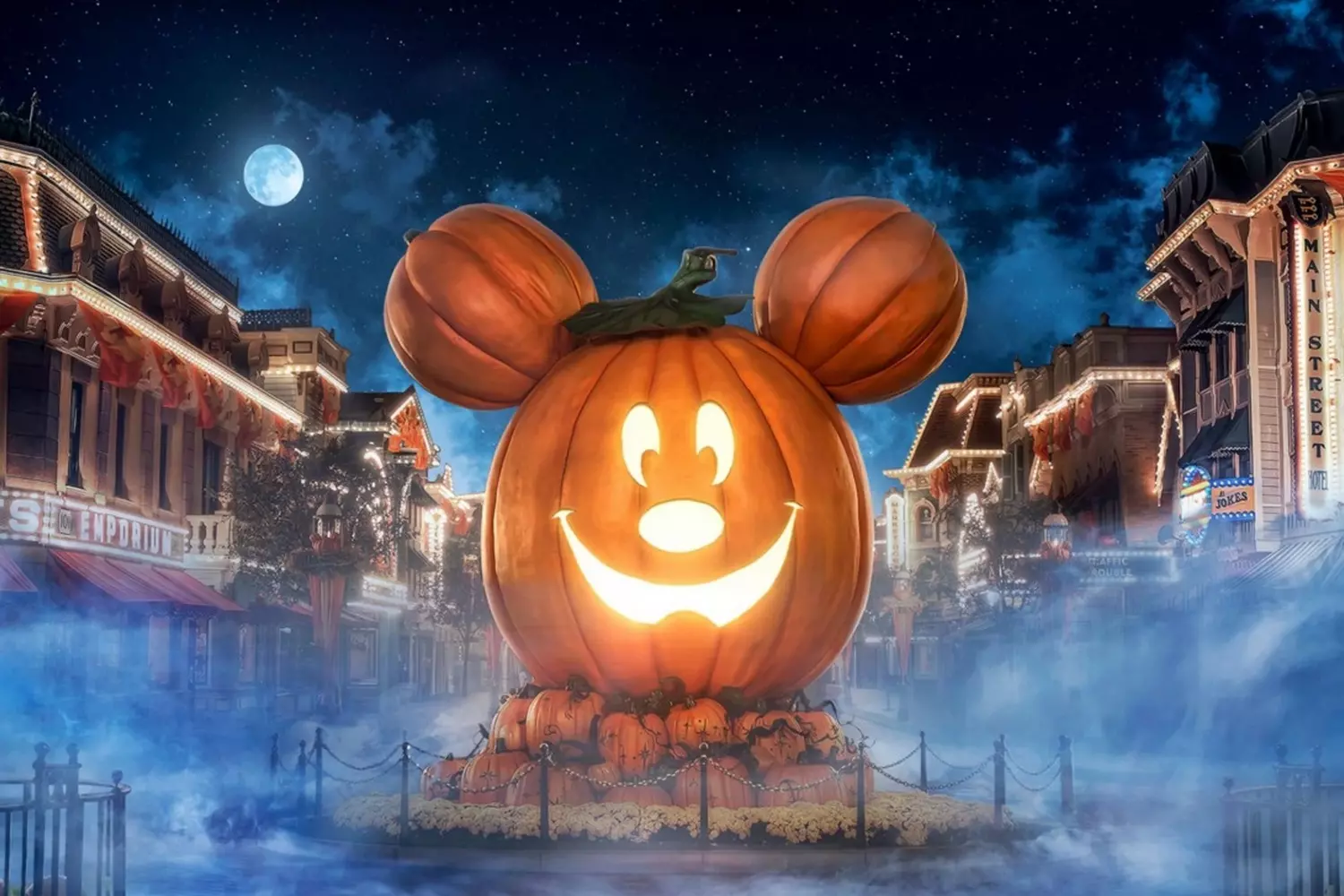
El Día de Muertos — a Living Tribute to Loved Ones
When it comes to Halloween and the celebrations at the end of October and beginning of November, people often recall the Mexican El Día de Muertos (Day of the Dead). This vibrant and touching holiday coincides in time with Halloween but is, in meaning and mood, a completely different world — and it is also popular in the southern United States.
Día de Muertos is a traditional Mexican holiday celebrated on November 1 and 2. It is a time when families remember and honor their deceased relatives and friends. The main focus here is not fear or frightening images, but joy, light, and love for those who have passed but live on in memory. It is a profound, multifaceted, and deeply emotional ritual lasting several days and including many unique rites and traditions. This holiday is not just a tribute to the dead but a true celebration of life and memory, uniting families and communities.
- Preparing altars (ofrendas)
The main element of the holiday is the ofrenda, or altar of remembrance. Each family sets up brightly decorated altars in their homes and cemeteries with photos of the departed, candles, and flowers — especially marigolds, which are considered guides for the souls. The altar is adorned with the deceased’s favorite foods and drinks (such as Mexican corn, fruits, hot chocolate), the traditional sweet bread — pan de muerto, sugar skulls (calaveras), and papel picado — colorful cut-paper decorations. This altar is a kind of bridge between worlds, where souls come to visit their loved ones. - Visiting cemeteries
On the first two days of November, families gather at cemeteries to remember their dead together. Prayers are said, traditional songs are sung, and small festive picnics with treats and music take place. Cemeteries become lively places, illuminated by thousands of candles creating a mystical yet warm atmosphere. - Colorful parades and costumes
Cities hold parades where participants wear bright costumes and paint their faces in the style of traditional skulls — calacas and calaveras. This symbolizes respect for life and death and connection with ancestors. Music, dancing, and loud laughter accompany these events, turning them into a true celebration. - Traditional dishes and treats
The festive table always features special dishes prepared according to ancient recipes: Pan de muerto — sweet bread decorated with patterns resembling bones, pumpkin seeds, various Mexican sweets, hot chocolate and chocolate drinks, soups, and dishes made from corn and beans typical of the region. Food during this time is an important part of the ritual, as it is believed that spirits receive these offerings in their world. - Family gatherings and storytelling
Día de Muertos is a time when families come together, recall stories from the lives of those who have passed, and share traditions and roots with children, passing on love and memory from generation to generation. It is a deeply human moment that helps to cope with loss through joy and respect.
For Mexicans, this holiday is not just a ritual but a philosophy of life and death. It teaches acceptance of loss with love and respect, seeing death not as an end but a transition to a new stage. Music fills the streets, colorful parades take place, people wear traditional costumes with painted skulls and smile — because it is a celebration of memory and hope.
Interesting fact: One of the most recognizable symbols of Día de Muertos is the sugar skulls (calaveras de azúcar). They are handmade, painted in bright colors, and inscribed with the names of the deceased. These skulls symbolize life and the continuity of generations, and in Mexican culture, they evoke more smiles than fear.
Although Día de Muertos and Halloween originated from different traditions, in recent decades these holidays have increasingly intertwined, especially in southern U.S. states with large Mexican diasporas. This creates a unique cultural space where the mystical and family aspects of the celebrations coexist side by side, complementing each other.
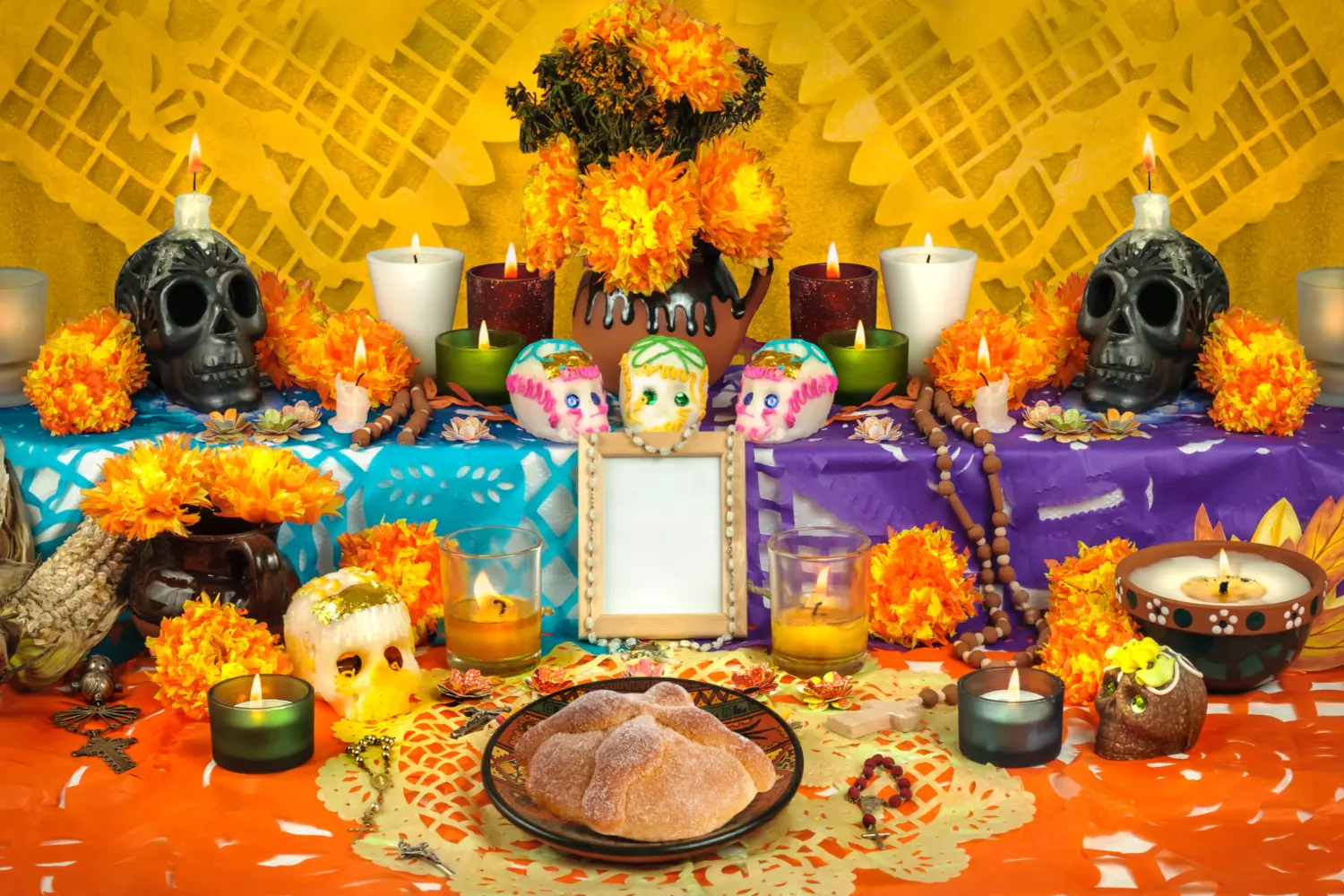
Halloween Under Scrutiny: Criticism and Religious Perspectives on the Holiday
Halloween is a bright, fun holiday widely loved in the USA and many other countries. However, it also has its darker side and reasons for criticism, which often spark debates in society and religious circles.
Despite its seemingly harmless nature, Halloween raises concerns for many people for several reasons:
- Commercialization
The holiday has long ceased to be just a tradition and has become a powerful industry with huge budgets for costumes, decorations, sweets, and entertainment. Some believe this deprives Halloween of its authenticity and turns it into an empty marketing stunt. - Frightening imagery
Images of witches, ghosts, zombies, and other “scary” figures often cause discomfort among parents and educators. For children, it can be too frightening and, for some, even traumatic. - Symbolism of death and occultism
The holiday’s roots in pagan rituals and mysticism often raise concerns among religious people. They believe Halloween promotes connections with the supernatural and even Satanism, warning about spiritual risks of participating in it.
How do different religions view Halloween?
- 01. Christianity
Attitudes toward Halloween vary greatly depending on the denomination:
- Catholic and Orthodox traditions tend to view the holiday skeptically, reminding that it is based on pagan beliefs and urging respect for All Saints’ Day — a holiday for prayers for the souls of the deceased.
- Many Protestant churches actively oppose Halloween, considering it a promotion of darkness and evil. In some communities, children are even forbidden to participate in “Trick or Treat.”
However, there are also more liberal approaches where Halloween is seen as an opportunity to have fun with family and friends without attaching too much importance to mysticism.
- 02. Judaism and Islam
In these religions, Halloween traditionally has no historical basis and is not a holiday. Religious organizations often call for abstaining from participation, as it conflicts with their teachings and norms. - 03. Buddhism and Hinduism
For many followers of these religions, Halloween is simply a cultural phenomenon, no more than that. The focus is on inner state and spiritual practices, not external attributes of the holiday.
Halloween is not only a holiday but also a topic for discussion in society. Some see it as a way to express imagination and enjoy themselves, while others view it as a threat to traditions and morality. Some schools and kindergartens introduce restrictions or alternative celebrations to avoid conflict. It is a holiday with a multilayered history that evokes different feelings in different people — from joy and excitement to anxiety and caution. Understanding and respecting different viewpoints helps preserve the spirit of the holiday without forgetting those who see it as more than just fun.
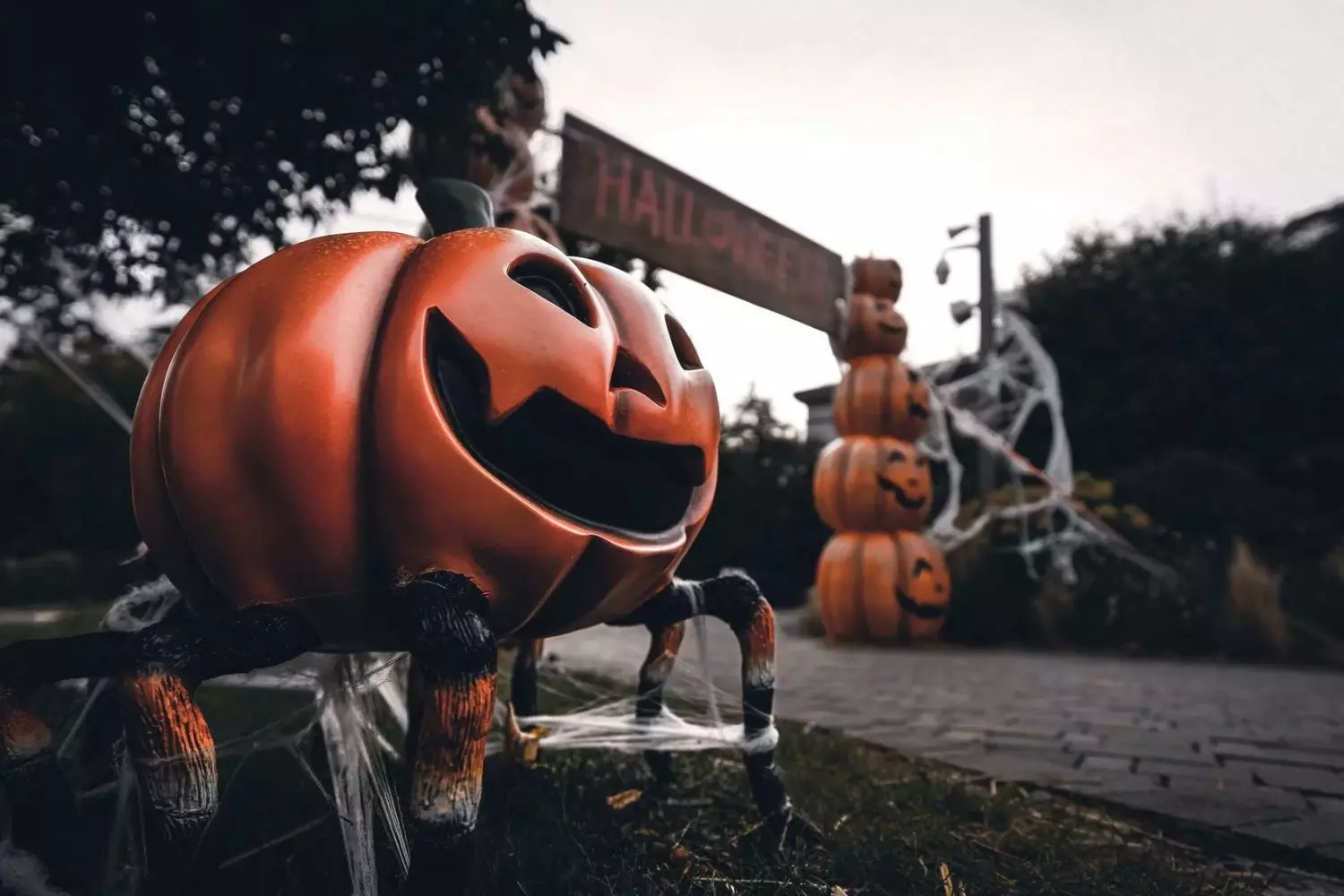
Halloween in Pop Culture: The Holiday That Changed Everything
Halloween is not just an evening of costumes and candy. This holiday has deeply penetrated American culture and everyday life, becoming a true cultural phenomenon. Its influence goes far beyond October 31, touching cinema, fashion, music, commerce, and even social relationships.
- 01. Halloween in Film and Television: From Classics to Modern Times
Perhaps the most vivid mark Halloween has left is in cinema. The name “Halloween” immediately brings to mind the iconic 1978 horror film by director John Carpenter, where viewers were introduced to the ruthless Michael Myers. This film laid the foundation for the slasher genre and annually reminds us of the holiday’s mystical atmosphere.
On the other hand, the animated film “The Nightmare Before Christmas” by Tim Burton became a kind of bridge between two holidays — Halloween and Christmas. This animated musical captivated millions of viewers with its gothic aesthetics and heartfelt story, making Halloween a family holiday loved not only by children but also by adults.
Television shows don’t overlook this holiday: iconic “The Simpsons,” “South Park,” and “American Horror Story” release special Halloween episodes every year. Thanks to this, the holiday becomes a unifying event that introduces different generations to traditions and spooky stories. - 02. Fashion and Style: Costumes That Inspire
Halloween is a time when you can forget everyday restraint and truly express your imagination through costumes. From classic witches, vampires, and zombies to popular characters from movies and TV shows — everyone chooses their own look to express uniqueness and lift their spirits.
Interestingly, trends from Halloween costumes have often made their way into high fashion. Gothic motifs, lace, skulls, and spiderwebs have become popular elements in collections by designers like Alexander McQueen and John Galliano. Many brands also release themed capsule collections inspired by the holiday, allowing everyone to touch a bit of Halloween aesthetics in everyday life. - 03. Commerce and Marketing: How Halloween Became a Business Phenomenon
American Halloween is a huge market where people buy not only costumes but also home decorations, party props, and, of course, sweets. Every year Americans spend billions of dollars on holiday-related products. According to the National Retail Federation (NRF), in 2019 expenses exceeded 9 billion dollars — and this amount continues to grow.
Marketers use Halloween themes in advertising products ranging from cosmetics to cars. Brands create limited edition packaging, hold costume contests, and themed events, engaging customers in the holiday and boosting loyalty. - 04. Social and Cultural Traditions: A Unifying Holiday
Halloween is not only commerce and entertainment but also an opportunity to gather family and friends. Schools organize themed events, offices hold parties, and entire cities host parades and festivals. One of the most famous events is the parade in New York City on Fifth Avenue, which gathers thousands of participants in costumes and tens of thousands of spectators.
Also popular are pumpkin farms and autumn mazes — family activities that give a sense of celebration and closeness to nature. These traditions make Halloween a time when people can not only have fun but also feel part of a community.
Halloween is not just a holiday with costumes and candy, but a deep cultural layer that permeates art, fashion, business, and society. It unites generations, inspires creativity, and creates a special atmosphere of anticipation for wonder and adventure. October in the USA is a time when streets fill with the light of pumpkins, children’s laughter, and mysterious shadows, and the holiday itself becomes an important part of the national identity.
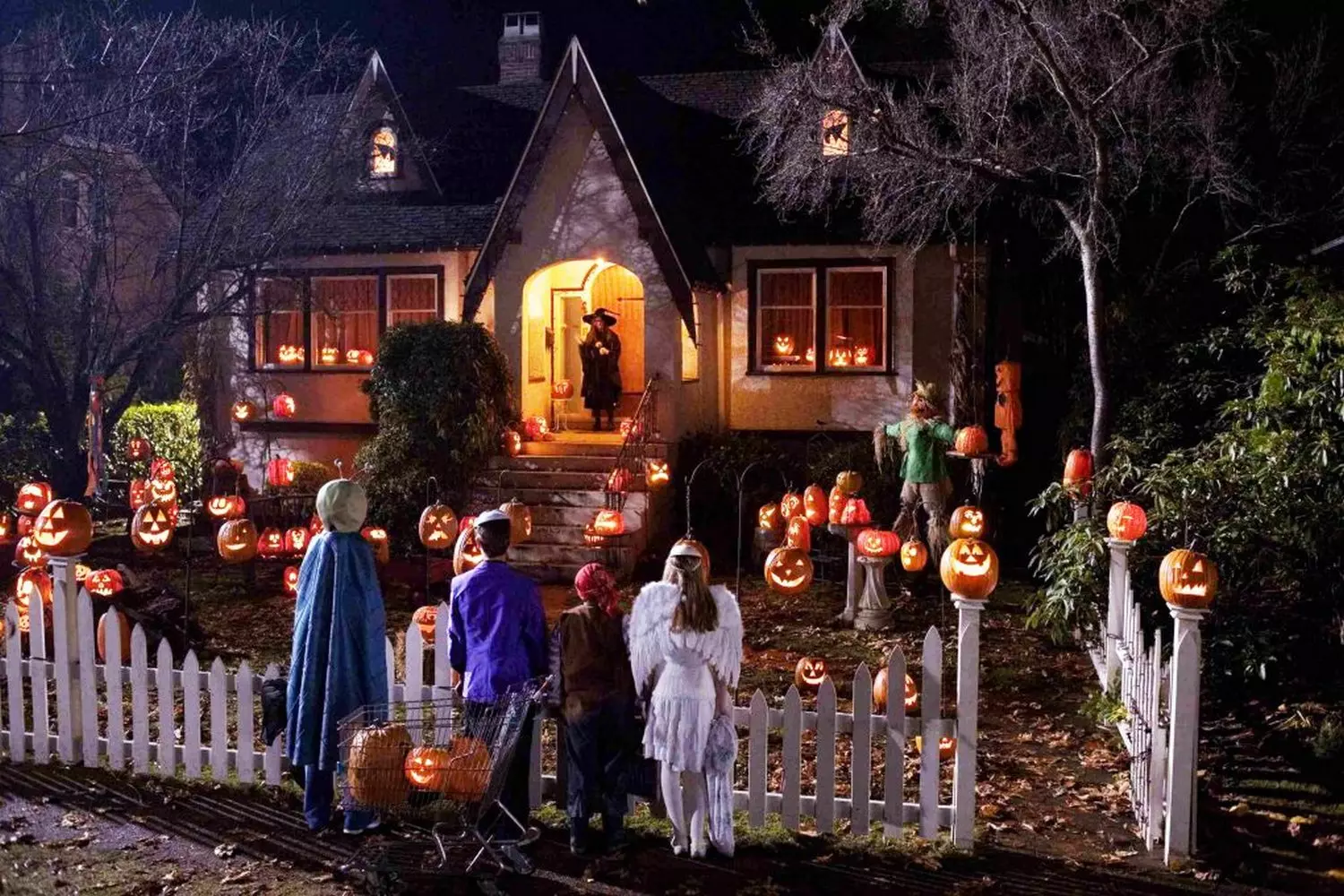
The Secrets of Halloween: Some Creepy Facts You Didn’t Know
Halloween is not just pumpkins, costumes, and candy. Behind its fun and spooky attributes lie centuries of traditions, mysticism, and even some random historical events. Want to know why we carve scary faces into pumpkins, where the “trick-or-treat” scream came from, and how the holiday is connected to… birds? Then read these eerily interesting facts!
- 01. Halloween Was Once… a Day for Fortune-Telling
Girls believed that on this night they could learn the name of their future husband. For example, if you cut an apple and toss its peel over your shoulder, it would form the first letter of his name. - 02. Orange and Black Aren’t Just Random Colors
Orange symbolizes the harvest and autumn, while black represents death and darkness. Together, they reflect the essence of the holiday: the transition from life to winter and the otherworld. - 03. Crows Are Halloween’s Unofficial Birds
They are often depicted in decorations because, in Celtic legends, crows were messengers between the worlds of the living and the dead. - 04. The First Halloween Masks Were Made of… Animal Skins
Ancient Celts wore animal pelts to scare away evil spirits. Modern costumes are a much kinder alternative. - 05. In the 1920s, the USA Had a “Halloween Code” for Adults
Due to rowdy parties, authorities issued rules: “Do not paint your face black” (to avoid portraying Black people) and “Do not wear costumes that offend religion” - 06. “Halloween Insurance” Is Sold in the USA
Companies offer payouts if you… get scared into a heart attack by an actor in a “haunted house.” - 07. The Most Expensive Halloween House Is Decorated for $1 Million
A mansion in Los Angeles is transformed into a real amusement park with 200 animatronic monsters, laser shows, and professional actors. - 08. Las Vegas Hosts the Most Expensive Halloween Show
Hotels spend up to $2 million on decorations, invite celebrities, and party tickets can cost $10,000. - 09. Texas Has a Unique Tradition — “Bat Night”
In the town of Brackenridge, every autumn people watch the emergence of 20 million bats — the largest mammal gathering on Earth. Tourists come especially for Halloween. - 10. Anoka, Minnesota — The First Official “Halloween Capital” of the USA
This small town was the first in the country to organize a city-wide Halloween parade in 1920 to distract teenagers from vandalism. Now it hosts a grand festival with up to 50,000 participants.
Halloween is not just an excuse to dress up as a monster. Behind every tradition lies centuries of history, superstition, and even social experiments.
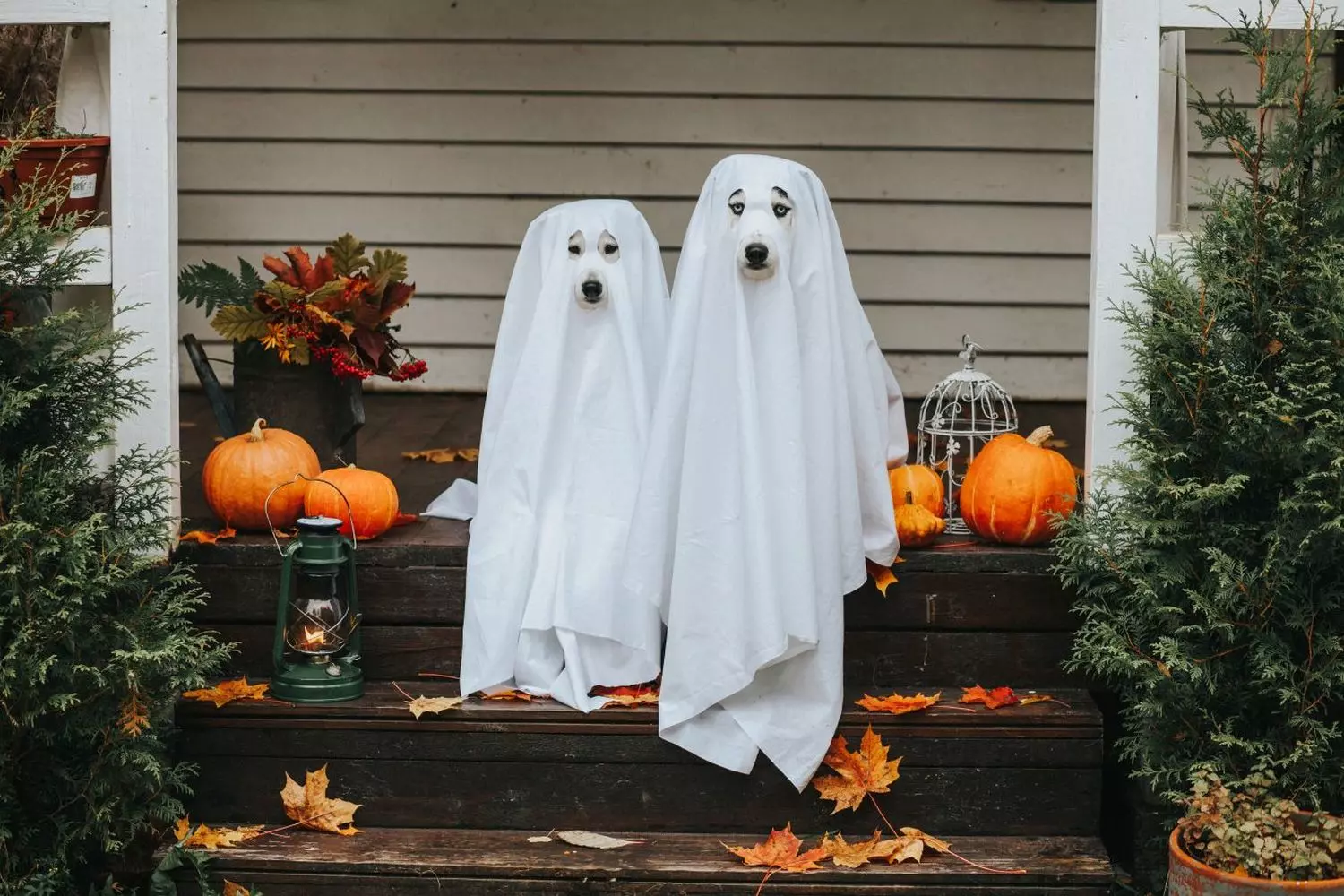
Treat yourself to an unforgettable Halloween with American Butler
Why should you experience Halloween specifically in America? Because nowhere else in the world is this holiday taken so seriously and celebrated on such a grand scale. It’s not just a "costume party night" — it’s a massive event involving entire cities. You’re not just entertained — you become part of the legend, part of the show.
America knows how to celebrate — loud, large-scale, and creative. And if you want to truly feel the Halloween atmosphere — come to the USA. It’s better to see it once than hear about it a hundred times. Even better — do it with American Butler.
We won’t just show you the parades and lights. We’ll open the doors behind the scenes where legends come alive, where every corner feels like a scene from a horror movie or a comedy. Want a personalized route, access to VIP events, the best seat reservations, and costumes everyone will remember? That’s what we’re here for.














